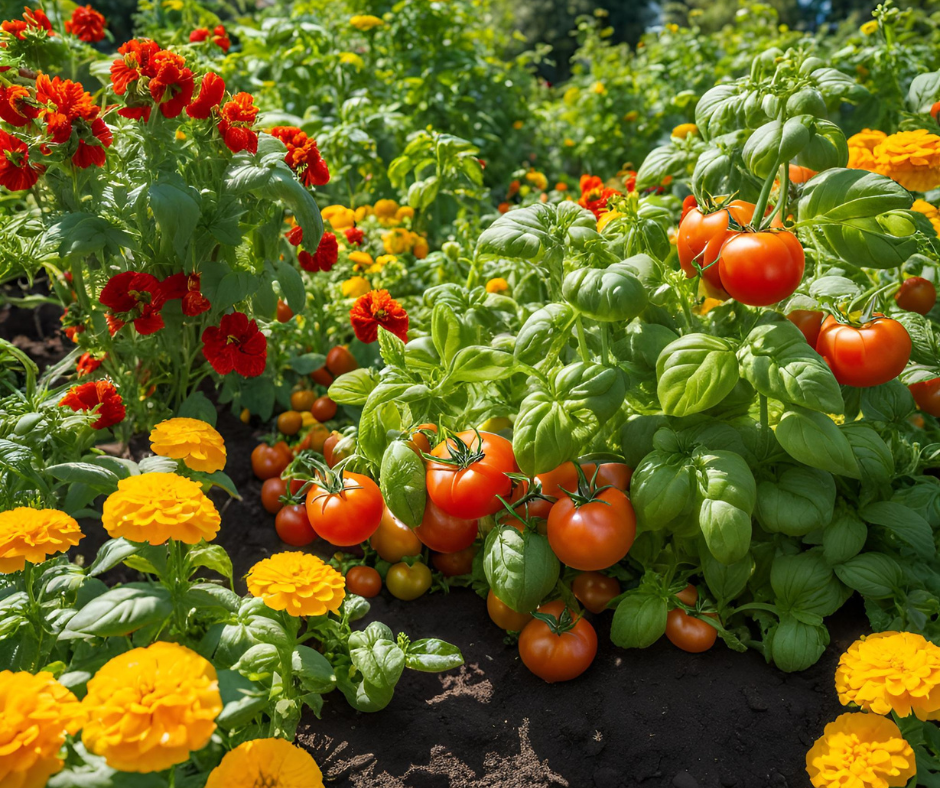
Where to plant what? Guide to Companion Planting in the Garden
Companion planting is a time-honored gardening technique that involves strategically placing different plants together to enhance growth, deter pests, and improve overall garden health. By understanding and utilizing the natural relationships between plants, gardeners can create a more productive and sustainable ecosystem with less effort.
Benefits of Companion Planting
-
Pest Control: Certain plants emit scents or chemicals that repel harmful insects. For example, marigolds are known to deter nematodes and other pests, making them excellent companions for various vegetables.
-
Improved Nutrient Uptake: Some plants, like legumes, have the ability to fix nitrogen in the soil, enriching it for neighboring plants. Planting beans or peas alongside heavy feeders like corn can naturally boost soil fertility.
-
Pollination Support: Flowers such as nasturtiums and sunflowers attract pollinators, increasing the chances of fruit set in nearby crops.
-
Weed Suppression: Ground-covering plants like clover spread quickly, shading the soil and preventing weed growth.
-
Enhanced Flavor and Growth: Certain herb-vegetable pairings, such as basil with tomatoes, are believed to improve the flavor and growth of the main crop.
Companion Planting Pairings
Below is a list of compatible plant pairings that can help you maximize your garden's potential:
-
Tomatoes:
- Companions: Basil, marigold, garlic, onions
- Benefits: Basil may enhance flavor and growth; marigolds deter nematodes; garlic and onions repel spider mites and other pests.
-
Carrots:
- Companions: Onions, leeks, radishes, lettuce, rosemary
- Benefits: Onions and leeks repel carrot flies; radishes help break up soil; lettuce provides ground cover; rosemary deters carrot rust flies.
-
Cucumbers:
- Companions: Radishes, marigolds, beans, dill
- Benefits: Radishes deter cucumber beetles; marigolds repel nematodes; beans fix nitrogen; dill attracts beneficial insects.
-
Peppers:
- Companions: Basil, onions, spinach, tomatoes
- Benefits: Basil repels aphids; onions deter pests; spinach provides ground cover; tomatoes share similar growing conditions.
-
Lettuce:
- Companions: Carrots, radishes, strawberries, cucumbers
- Benefits: Carrots and radishes mature at different times, optimizing space; strawberries provide ground cover; cucumbers offer shade.
-
Beans:
- Companions: Corn, squash, cucumbers, radishes
- Benefits: Corn provides support for climbing beans; beans fix nitrogen for heavy feeders like corn and squash; radishes deter pests.
-
Spinach:
- Companions: Strawberries, peas, radishes, cilantro
- Benefits: Strawberries provide ground cover; peas fix nitrogen; radishes deter pests; cilantro attracts beneficial insects.
-
Broccoli:
- Companions: Onions, celery, potatoes, dill
- Benefits: Onions deter pests; celery improves soil health; potatoes share similar nutrient needs; dill attracts beneficial insects.
-
Zucchini (Summer Squash):
- Companions: Nasturtiums, corn, beans, marigolds
- Benefits: Nasturtiums deter squash bugs; corn provides support; beans fix nitrogen; marigolds repel nematodes.
-
Cabbage:
- Companions: Dill, onions, potatoes, celery
- Benefits: Dill attracts beneficial insects; onions deter pests; potatoes share similar growing conditions; celery improves soil health.
For a more comprehensive guide on companion planting, consider consulting resources like the Old Farmer's Almanac Companion Planting Guide and the Mother Earth News Companion Planting Guide.
By thoughtfully selecting and pairing plants, you can harness the natural benefits of companion planting to create a thriving, resilient garden with less reliance on chemical interventions.
